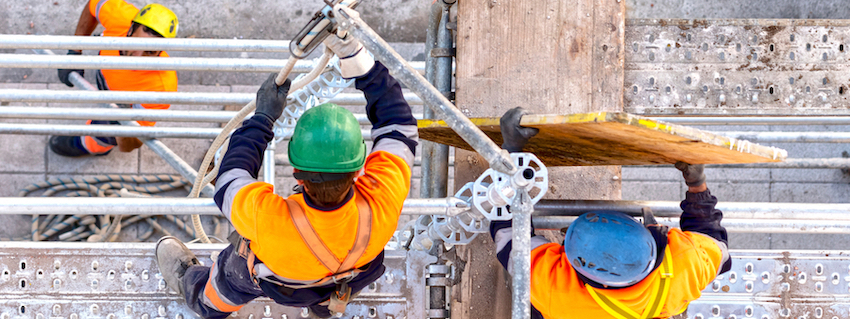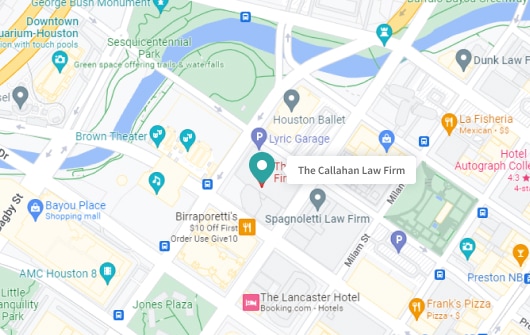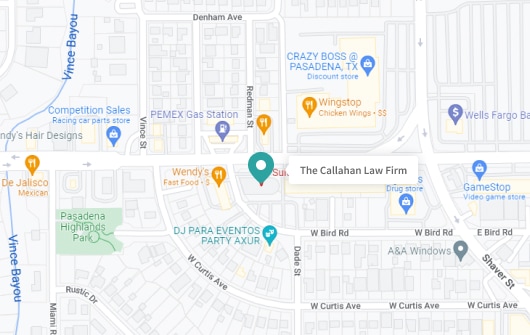Workers use scaffolding, or scaffold platforms, in various industries in Houston. They are commonly used in construction, home improvement, painting, entertainment, and cleaning jobs. While scaffolding helps get the job done when someone needs to work above ground, it can also be dangerous. If a scaffold platform collapses, for instance, or a worker falls, it can result in a catastrophic work injury and an expensive recovery process.
If you suffered an injury in a scaffold accident, The Callahan Law Firm is here to help. While you focus on your health, we can explore all your legal options, including potential third-party liability claims. For more than 25 years, we have protected the rights of injured workers in Houston and throughout Texas. We are ready to go to work for you.
You have one chance to get justice. The choice is yours. Call or reach us online today and get started with a free consultation.
What Is a Scaffold? Are There Different Types of Scaffold Platforms?
A scaffold serves as a temporary, elevated work platform. It allows workers to tackle jobs above ground – and often at significant height – while still enjoying some slight freedom of movement. You frequently see scaffold platforms at construction sites. Painters and window cleaners use them, too. If you have ever been to the set of a TV or movie production, you may see scaffolding all over the set, with camera operators working on them.
Scaffold platforms fall into three general categories:
- Supported scaffolds — This type of scaffold is commonly used. It is a platform typically held up by load-bearing poles, legs, or frames.
- Suspended scaffolds — With this type, the platforms are held by ropes, cables, or some other kind of non-rigid material.
- Aerial lifts — A scissor lift or aerial lift is a type of mobile, supported scaffold.
Because of the many hazards that exist for workers on scaffolding, the design, setup, use, and maintenance of this equipment are highly regulated by the Occupational Safety and Health Administration (OSHA). These hazards exist regardless of the type of scaffolding. Unfortunately, all too many companies ignore those risks and, through their negligence, cause serious scaffold injuries.
What Hazards Do Workers Face When They Work on Scaffolding?
If you work on scaffolding, you should be aware of the many hazards you face. They include:
- Falls from heights
- Slips on the platform
- Collapse of the platform
- Electrical hazards such as powerlines
- Instability of the ground on which the platform sits
- Struck by equipment falling from above the scaffold
- Struck by equipment falling from the scaffold
While OSHA regulations cover nearly every aspect of scaffold use, the regulations do no good if employers and others fail to follow them. For instance, one commonly violated OSHA regulation, 29 CFR 1926.454(a), requires employers to ensure a qualified person instructs all employees about the risks they face when operating on or around scaffolding. Many scaffold accidents in Houston and elsewhere could be avoided if workers were simply trained better and knew how to work safely.
What Are the Common Causes of Scaffolding Accidents?
Some of the most common causes of scaffold accidents we have encountered as workplace injury lawyers at The Callahan Law Firm include:
- Defective manufacturing —The scaffolding may have a flaw in its design, or it may have been made of material that was unfit for its purpose.
- Faulty construction — If scaffolding is erected improperly, a full or partial collapse could happen. For instance, some scaffolds lack sufficient bracing or guardrails.
- Poor maintenance —Scaffolding must be routinely inspected for wear and tear, rot, rust, and decay. Old, neglected scaffolding can be shaky, slippery, and dangerous.
- Insufficient planking — The planks used for scaffolding must be sturdy and meet all OSHA safety standards. Inadequate planking can create fall risks.
- Inadequate training — Employers have a duty to train workers on how to build, maintain, and work safely on and around scaffolding.
- Lack of safety equipment — If you work on scaffolding, you must be provided with basic safety equipment, including protective head and eye gear, as well as fall-arrest equipment that addresses the unique risks of working on a scaffold. People who work below scaffolding should be protected from falling objects.
- Negligence of others — Unfortunately, even when employers and workers follow all OSHA regulations and work safely and responsibly on scaffolding, others at the job site can lack caution and cause serious scaffold accidents
If you believe that you suffered your injuries in a scaffold accident that was the result of someone else’s negligence, you should seek help immediately from our experienced Houston scaffold accident lawyers. You need to act quickly to protect your right to recover full and fair compensation.
What Are Common Scaffold-Related Injuries?
In many scaffold accidents, a worker suffers severe injuries by falling from the structure, or from the structure collapsing and falling onto them. Workers can also slip and fall on platforms, suffer injuries from awkwardly bending or twisting, or from having an object from a scaffold fall and strike them.
Common scaffold accident-related injuries in Houston include:
- Fractures
- Crushing injuries
- Soft tissue damage
- Traumatic brain injury (TBI)
- Internal organ damage
- Spinal cord injuries
- Paralysis, both paraplegia and quadriplegia
- Fatalities
If you suffered an injury of any severity in a Houston scaffold accident, and you have needed medical treatment, missed time from work, and suffered harm to your enjoyment of life, you should take immediate steps to protect your rights.
Scaffolding Safety — OSHA Guidelines
Due to the unique risks that scaffolding presents — and a large number of those risks — OSHA heavily regulates the use of this equipment. The agency has regulations that address nearly every aspect of using scaffolds in the workplace. Just a few examples of those regulations include:
- Support — No space can lie between the platform and an upright greater than 1 inch unless a wider opening is necessary because of brackets or shape. 29 CFR 1926.451(b)(1).
- Planking — The planking must support at least four times the intended load and its own weight and be at least 18 inches wide or more. Also, the platform cannot be cluttered with debris. See 29 CFR 1926.451(a)(1), 29 CFR 1926.451(f)(13), and 29 CFR 1926.451(b)(2).
- Guardrails — If scaffolding is used at a job site, guardrails must be in place, including on all open sides and ends. If stilts are used, the guardrails must be raised to the same height. Steel and plastic banding cannot be used for a top or mid rail. Personal fall-arrest systems must always be used as well. See 29 CFR 1926.451(b)(2), 29 CFR 1926.451(g)(4)(i), 29 CFR 1926.451(g)(4)(iii), and 29 CFR 1926.452(y).
How Can a Houston Workplace Injury Lawyer Help You?
If you were injured in a Houston scaffolding accident, you may be eligible to seek compensation by filing a civil lawsuit against your employer and other responsible parties. It generally will depend on whether your employer carries workers’ compensation insurance, and whether the negligence of a company that was not your employer caused your injuries.
Examples of parties who could be held liable in a third-party liability claim arising from a scaffolding accident include:
- Employees or contractors who failed to properly construct and maintain the scaffolding, or who acted irresponsibly around it
- Forklift operators or other drivers on the worksite who collide with scaffolding due to their negligence
- Scaffolding manufacturers, distributors, and retailers who allowed defective scaffolding to enter the marketplace
- Engineers or architects who played a role in designing the scaffolding
- Property owners who allowed unsafe conditions to exist on the site
The compensation available through a lawsuit against an employer or a third-party liability claim may include economic damages (such as medical expenses and lost wages), non-economic damages (such as pain, suffering, impairment, and emotional distress), and, in some cases, exemplary damages to punish bad behavior.
At The Callahan Law Firm, our Houston workplace injury attorneys want to help you seek full compensation after a scaffold accident. To learn more about how we can help you, contact us today for a free consultation



